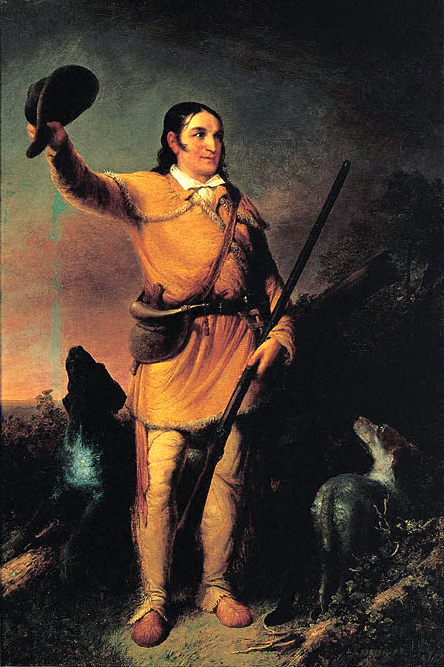
One afternoon last month, Dreanna Belden, the assistant dean for external relations at the University of North Texas library system, was about to leave work for the day when she noticed a voicemail message on her office telephone. The message was from a woman who claimed to have identified a photograph she had seen on UNT’s Portal to Texas History, a massive online archive of historical resources aggregated from hundreds of museums and historical associations around the state. “You have a picture on the portal that says ‘Face of a man,’” the message said. “I know who that man is, and I think you’re going to want to talk to me.”
The woman was Carol Campbell, and she had identified a previously unknown image of David Crockett, the legendary frontiersman, Tennessee congressman, and Alamo defender. Campbell, a direct descendent of Crockett, recognized the image—a photograph of a portrait that is now lost—because she owns an identical copy.
“When I saw it, I was like, I can’t believe UNT has this,” Campbell told me recently by phone from Colorado, where she lives. “And they apparently had no idea who it was—it was just identified as a photograph of a man’s face. I was like, ‘no, it’s my great-grandmother’s grandfather.’”
The item featured on the portal, a postcard-sized black-and-white photograph mounted on cardboard, is owned by the Log Cabin Village, a Fort Worth museum dedicated to nineteenth-century Texas history. According to Campbell, it’s a photograph of an original portrait owned by Crockett’s son Robert Patton Crockett, who had reproductions made to give to his own children as keepsakes. The portrait itself was eventually donated to the original Texas State Capitol in Austin, where it hung until 1881, when a fire destroyed the building.
Because Crockett died at the Alamo in 1836, before the advent of photography, the only original images of him that exist are the numerous portraits for which he sat, beginning in 1827, his first year in Congress. Six of those portraits have survived, either as original paintings or mechanical reproductions. Two are owned by the Smithsonian’s National Portrait Gallery, one by the New York Historical Society, one by the University of Texas’s Harry Ransom Center, one by the Tennessee State Museum, and one by a private collector.

University of North Texas historian Andrew Torget, who has compared the newly discovered image to the verified portraits of Crockett, believes it to be the genuine article. “It looks like him,” Torget said. “The clothes he’s wearing are what he would have worn in Congress, and it really matches the handful of other portraits of Crockett that we have from that era.”
Although it was unknown to historians, the image has appeared at least once before, in a Danville, Illinois, newspaper article from the thirties about a relative of Crockett’s who was living in town. The relative evidently supplied the newspaper with a copy of the image. “That’s the only time we’re aware that the photo has ever been published—it was in that little, tiny newspaper, and never seen again,” said Belden, the UNT dean.
Belden credited the Portal to Texas History with making the image’s identification possible. The site receives over 600,000 views a month from around the world. “This isn’t the first time that something sitting on a shelf in a small-town museum somewhere in Texas has been identified through the Portal,” she said. “Thanks to the digital revolution, there are going to be a lot more discoveries like this.”
Photo credit: Swartz Art Parlor. [Photograph of a Man’s Face], photograph, Date Unknown; (texashistory.unt.edu/ark:/67531/metapth38792/m1/1/: accessed November 3, 2016), University of North Texas Libraries, The Portal to Texas History, texashistory.unt.edu. Crediting Log Cabin Village.







